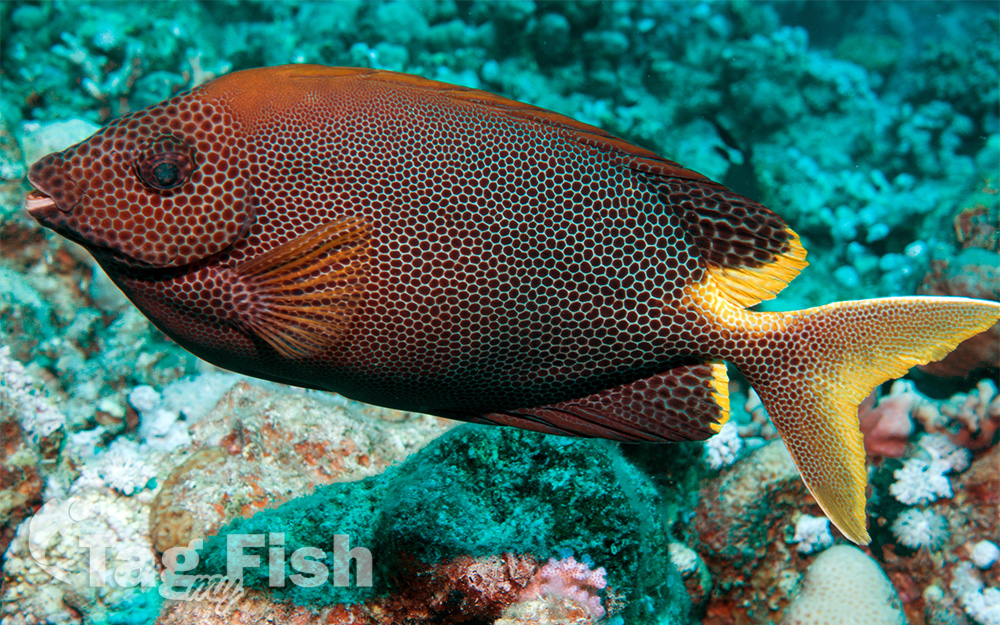Brown-spotted spinefoot
(Siganus stellatus)

Classification
General data
Siganus stellatus has a deep and laterally compressed body whose depth is 2 to 2.3 times of its standard length. The dorsal profile of the head is almost a straight line and has an angle of around 45° between the forehead and the snout while the ventral profile of the head has a slight indentation under the chin. In juveniles, the front nostril has a long triangular flap, but this is reduced to a low rim in adults. There is a recumbent spine to the front of the dorsal fin.
Like all rabbitfishes, the dorsal fin has 13 spines and 10 soft rays while the anal fin has 7 spines and 9 soft rays. The fin spines hold venom glands. The caudal fin is emarginate but slowly becomes deeply forked as the fish grows.
This species attains a maximum total length of 40 cm (16 in), although 35 cm (14 in) is more typical.
The body is covered in small and closely set dark brown to black spots on a white background, creating a honeycomb pattern. There are black spots on the fins while the caudal fin and the rear edges of dorsal and anal fins have a whitish margin. They frequently show a light, whitish to yellowish saddle mark on the caudal peduncle. In the subspecies S. s. laqueus, the background colour of the body is greyish green with the head and the body covered with dark brown spots.
Siganus stellatus is found from the Red Sea and through the Indian Ocean (where it can be found as south as South Africa) into the Pacific Ocean where it reaches Singapore. In Australia, it is known only from the Cocos (Keeling) Islands.
It can be found seagrass beds, seaward reefs and lagoons at depths between 1 and 30 m (3 ft 3 in and 98 ft 5 in). Juveniles are known to enter weedy estuarine habitats.










